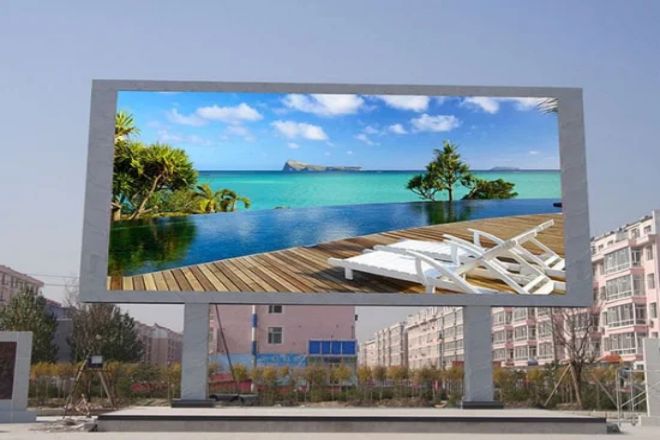소개

With the rapid development of science and technology and the increasing awareness of environmental protection, energy conservation has become an important issue in today’s society.
In the field of display technology, LED 디스플레이 have gradually replaced traditional display devices and become the mainstream choice in the market due to their high efficiency and energy-saving characteristics.
Energy-saving LED displays not only reduce energy consumption but also make positive contributions to protecting the environment and promoting sustainable development. This article will delve into how energy-saving LED displays save energy.
1. Basic principles of energy-saving LED displays
The energy-saving secret of LED displays is actually not complicated. It is like a smart little energy-saving expert. It can always cleverly convert electrical energy into light energy, which is both bright and energy-saving.
First of all, the LED display screen is composed of a bunch of small LED lights. These LED lights are like small luminous bodies that can efficiently convert electrical energy into light energy through a special internal structure. This process is like charging the LED lights, and then they can glow brightly.
Moreover, the LED display screen also has a smart control system. This system can sense the surrounding light intensity and automatically adjust the brightness of the LED lights. For example, when the sun is strong during the day, the control system will reduce the brightness of the LED light to avoid glare.
While at night or in a dark environment, the control system will increase the brightness of the LED light to ensure that we can clearly see the display. Content on the screen. This not only ensures viewing comfort but also avoids unnecessary waste of energy.
In addition, the color performance of the LED display is also very good. By using advanced wide color gamut technology, LED displays can display richer and more realistic colors, allowing us to enjoy a more shocking visual experience.
2. Energy-saving technology for energy-saving LED displays

The reason why energy-saving LED display screens can achieve high efficiency and energy saving is inseparable from the support of a series of advanced energy-saving technologies.
These technologies, from the optimization of LED chips to the application of intelligent control to the fine regulation of power management, together form the energy-saving core of energy-saving LED displays.
가장 먼저, the application of high-efficiency LED chips is a key part of the energy-saving technology of energy-saving LED displays. In the development process of LED chips, scientific researchers are committed to improving the luminous efficiency of the chips and reducing energy consumption.
By using advanced material technology and structural design, we have developed LED chips with high brightness and low energy consumption. These chips are able to achieve high-brightness light emission at lower voltages and currents, thereby significantly reducing the energy consumption of the display.
둘째, the optimization of heat dissipation performance of LED chips is also an important part of energy-saving technology. The LED chip will generate a certain amount of heat during its working process. If the heat dissipation is poor, the chip temperature will rise, which will affect its luminous efficiency and stability. Therefore, optimizing the heat dissipation performance of LED chips is crucial to improving the energy-saving performance of displays.
By using efficient heat dissipation materials and structures, as well as reasonable thermal design, the operating temperature of the LED chip can be effectively reduced, and its luminous efficiency and stability can be improved.
The application of intelligent control technology is also a highlight of energy-saving LED displays. The adaptive brightness adjustment system can automatically adjust the brightness of the display screen according to changes in ambient light, ensuring that the best visual effects can be maintained under different light conditions while avoiding unnecessary waste of energy.
Dynamic energy-saving mode and sleep mode can intelligently adjust the working status according to the usage of the display, further reducing energy consumption.
게다가, the optimization of power management systems is also an important aspect of energy-saving LED display technology. High-efficiency power conversion technology can reduce the loss of electrical energy during the conversion process and improve power utilization efficiency.
Improvements in power management strategies can optimize the energy consumption of the display through sophisticated power management algorithms.
3. The energy-saving practice of energy-saving LED display
Energy-saving LED displays have demonstrated their excellent energy-saving characteristics in various application scenarios. Below, we will discuss its energy-saving performance in detail from three aspects: outdoor billboards, stadiums, and commercial displays.
In the application of outdoor billboards, energy-saving LED displays, with their high brightness, high contrast, and high saturation characteristics, ensure that advertising content is still clearly visible under direct sunlight.
At the same time, through the automatic brightness adjustment function, the display screen can adjust its own brightness according to changes in ambient light, which not only ensures the advertising effect but also avoids unnecessary waste of energy.
In addition, outdoor LED displays are also resistant to ultraviolet rays, acid, and alkali and can operate stably for a long time in harsh outdoor environments, further reducing energy waste caused by equipment damage.
Sports venues are another important application area for energy-saving LED displays. As a new type of lighting equipment, stadium LED lights have gradually replaced traditional fluorescent lights with their high efficiency, energy saving, long life, and other characteristics.
Stadium LED lights use semiconductor light-emitting technology, which has higher light efficiency and lower heat generation and can save a lot of energy resources. At the same time, through the intelligent control system, the brightness of the stadium LED lights can be flexibly adjusted according to the needs of the game to meet the lighting needs in different scenarios, further reducing energy consumption.
In the field of commercial display, energy-saving LED displays also play an important role. Whether it is a shopping mall, supermarket, or specialty store, LED display screens are a powerful tool to attract customers’ attention.
Through dynamic and multimedia advertising playback, LED displays can not only attract more customers but also update advertising content in a timely manner to improve advertising effectiveness. At the same time, due to its high efficiency and energy-saving characteristics, the application of LED display screens in commercial displays also reduces the operating costs of merchants.
4. The future development of energy-saving LED displays

As a leader in modern display technology, energy-saving LED display screens will be driven by multiple factors, such as technological innovation and policy support.
In terms of technological innovation, the research and application of new LED materials will provide strong support for the performance improvement of energy-saving LED displays. For example, new materials may have higher luminous efficiency and lower energy consumption, further improving the energy-saving performance of displays.
At the same time, higher integration of drive and control technology will also promote the development of energy-saving LED displays towards higher performance and more intelligence. Through more refined driving and control, the display can achieve more precise brightness adjustment and richer display content, further improving the user experience.
In addition to technological innovation, policy support is also an important driving force for the future development of energy-saving LED displays.
As the world attaches increasing importance to energy conservation, emission reduction, and sustainable development, government support policies for the energy conservation industry will also continue to strengthen. These policies may include financial subsidies, tax incentives, and other measures to encourage enterprises to increase investment in the research, development, and application of energy-saving technologies.
At the same time, market promotion and consumer awareness improvement are also important aspects of the future development of energy-saving LED displays. Through extensive publicity and promotion, more consumers can understand and accept energy-saving LED displays, thus promoting its application in various fields.
5. There is a significant contrast in energy consumption between energy-saving LED displays and other display technologies.
First of all, compared with traditional LCD displays, LED displays show obvious advantages in energy consumption. The power consumption of LED displays is relatively low, which is mainly due to the high-efficiency light-emitting characteristics of LED lights. In contrast, LCD displays require relatively high energy consumption due to the need for backlight assistance.
In addition, the LED display screen has a wider brightness adjustment range and can automatically adjust the brightness according to changes in ambient light, further reducing energy consumption. Therefore, when used for a long time, LED displays can save more energy than LCD displays.
Secondly, compared with OLED displays, although OLED displays also have energy-saving characteristics in some aspects, LED displays may have more advantages in certain application scenarios. The OLED display uses the luminescence principle of the organic material itself to achieve the display effect without the need for a backlight, so its energy consumption is relatively low.
However, LED displays may be better in terms of brightness and color performance, and the cost is relatively low. Therefore, when choosing a display technology, there are trade-offs based on specific application needs and budget.
In general, energy-saving LED displays have certain advantages over traditional LCD displays and OLED displays in terms of energy consumption. However, different display technologies have their own unique characteristics and applicable scenarios, and multiple factors should be considered when selecting the most suitable display solution.
결론
In short, energy-saving LED displays are gradually becoming green revolutionaries in the display field with their unique energy-saving advantages.
Through the discussion in this article, we hope to enhance the public’s awareness and understanding of energy-saving LED displays, promote their application in more fields, and jointly contribute to environmental protection and sustainable development.
Finally, if you know more about LED displays, 우리에게 연락해주세요.
